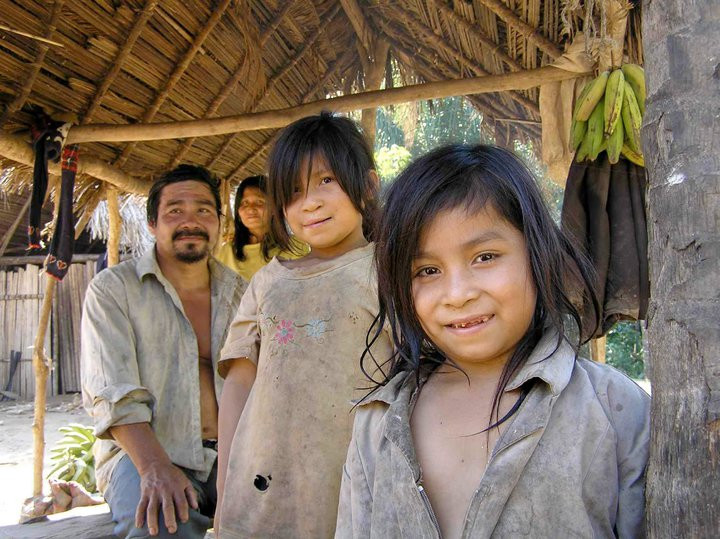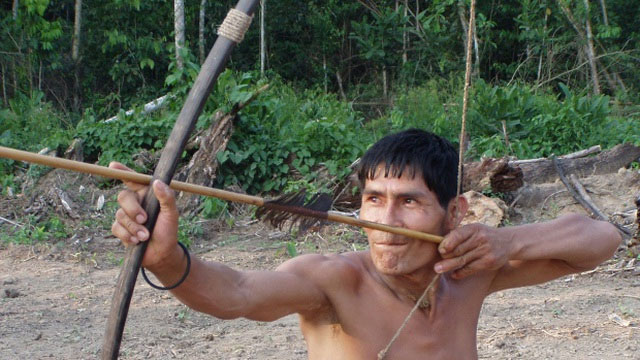Researchers have confirmed that the Tsimane people, a tribe living in the rainforest of Bolivia, have the healthiest hearts on the planet. Their diet, rich in carbohydrates, and their active lifestyle are believed to be the secrets behind their heart health.
According to the technology site Gizmodo, researchers conducted a coronary artery calcium (CAC) test on 705 individuals from the Tsimane tribe. If a person has a CAC score between 100-400, it indicates a mild risk of cardiovascular disease, while a lower score means there is no concern.
The results of the tests were astonishing. Out of 705 participants, 596, or 85% of the Tsimane individuals tested, had a CAC score of 0. Additionally, 89 people (13%) had scores ranging from 1-100, and only 20 individuals (2%) had scores greater than 100.
Thus, 85% of the Tsimane have no coronary artery calcification, and 98% of them are not at risk for heart disease. It is not an exaggeration to say that the Tsimane people have the healthiest hearts on the planet.

A Tsimane family in Bolivia.
Researchers noted that what the Tsimane do is fundamentally similar to what doctors often recommend. The Tsimane do not smoke or drink alcohol. Furthermore, they are very active; an average Tsimane walks about 16,000-17,000 steps each day. Even individuals over 60 years old walk around 15,000 steps daily, while the average American only walks about 5,000 steps a day.
The Tsimane diet has been discovered to consist of the following:
- 17% of their food sources come from wild boar, South American tapir, and capybara (the largest rodent in the Amazon rainforest).
- 7% of their diet comes from freshwater fish like piranha and catfish.
- The remaining majority comes from crops they grow themselves, such as rice, corn, taro, and bananas. They also consume a lot of fruits and nuts.
Specifically:
- 72% of the calories consumed by the Tsimane come from carbohydrates, compared to 52% for Americans.
- 14% of the calories consumed by the Tsimane come from fats, compared to 34% for Americans. However, the Tsimane consume less saturated fat.
- 14% of the calories for both the Tsimane and Americans come from protein, but the Tsimane consume more lean meat.
A carbohydrate-rich diet is considered the key to the Tsimane’s astonishing heart health. However, this does not mean that one simply needs to eat a lot of carbohydrate-rich foods like they do. Researchers emphasize the importance of staying active for maintaining a healthy heart.
“I want to say that we should exercise more regularly, not just on weekends,” said Michael Gurven, a professor at the University of California. “Urbanization and workforce specialization are new risks for your heart. The fact is, when the Tsimane became less active due to new transportation methods like motorized boats and began consuming more processed foods, their blood cholesterol levels increased.”
Meanwhile, Joep Perk, a cardiologist in Sweden, stated: “There is a recent trend suggesting that genes are the cause of cardiovascular problems. This study confirms that diet and exercise are what truly matters.”
Recently, an international group of researchers discovered that the Tsimane experience less brain atrophy compared to Americans and Europeans.
The study published on May 26 showed that their brain volume decline is about 70% slower than that of most Westerners, depending on age.
This finding challenges our perceptions of the adverse effects of modern lifestyles.
These findings indicate that brain atrophy can be significantly slowed down, along with reducing the risk of heart disease, if one maintains a suitable lifestyle.
To reach this conclusion, researchers gathered data from 746 adult Tsimane individuals aged 40 to 94 and studied their health.

The Tsimane primarily live by hunting and gathering.
The Tsimane are one of the few communities on Earth that still primarily rely on hunting and gathering. They have only developed a very rudimentary form of agriculture similar to that of their ancestors who lived tens of thousands of years ago.
To obtain brain CT scans of the Tsimane, researchers provided all necessary transportation from remote villages to Trinidad, Bolivia—the nearest town with CT scanning equipment.
Afterward, the research team used the scans to calculate brain volume and examine their relationship with the age of the Tsimane.
Next, they compared these figures with results obtained from three groups living in industrialized areas in the U.S. and Europe.
Scientists found that the difference in brain volume between middle-aged and elderly Tsimane is 70% smaller than that of Westerners.
This indicates that the Tsimane experience less brain atrophy as they age, helping them avoid the risks of cognitive decline, functional impairment, and dementia.



















































